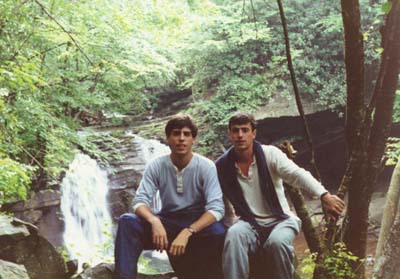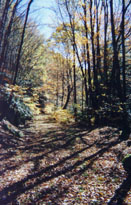
Otter Creek Wilderness Area


About the Wilderness
The 20,000-acre Otter Creek Wilderness is located in the Tucker and Randolph Counties,
West Virginia. It includes almost the entire drainage areas of Otter Creek and Shavers Lick Run. The area provides
outstanding opportunities for hiking, camping, and other forms of wilderness recreation.
Most of the area is forested with second-growth timber stands which developed following timber harvests from 1890
to 1914. Parts of the area were also logged between 1958 and 1972. Extensive portions of the area are covered by
nearly impenetrable stands of rhododendron, which can make travel off the trails extremely difficult.
Weather and Snow
You should plan for rain or snow (in winter, spring, and fall). The area receives more than 55 inches of precipitation
annually, usually quite evenly distributed through the year. The weather frequently changes suddenly, and 2 to
3 inches of rain, or 12 to 18 inches of snow in a single storm are not uncommon. Temperatures at high elevations
are comparable to those several hundred miles to the north. Frost may occur during any month of the year. It is
very important to have proper equipment and clothing to protect against insects, snakes, rain and cold.
About the area......
This is a heavily used Wilderness area, likely due to its close proximity to the populations
centers of Washington, D.C. as well as those in Ohio. And its heavily used probably due to another good reason
- it's quite beautiful. Like many of the USFS Wilderness Areas, Otter Creek is a river valley surrounded by mountains.
The absolute headwaters of Otter Creek is actually outside the Wilderness area, but by the time it enters the boundary,
it's a beautiful river lined with rhododendron thickets. As the river travels down the valley, it cascades over
stones and between large boulders providing a picturesqe scene. By the time it reaches Green Mountain Trail, it
has widened a bit and slowed down some, but it's still quite pretty. Of course, I would be remiss if I didn't mention
the large swimming hole that can be found in this region of Otter Creek. During the warmer months, many can be
found camped in this region, enjoying the chilly, if not refreshing wading opportunties offered by this swimming
hole.
For many of the people who backpack into the area, the river valley is quite enough. There are many fine campsites
along the length of the river, and that's where most of the people stay when they visit. But the side trails are
quite interesting too, including a large marsh located at the top of the Moore Run Trail. While Moore Run Trail
skirts the marsh along its northern boundary, there is a fine view near the top. I've not had a chance to explore
this part of Otter Creek yet, but it looks very interesting. Meanwhile, the trail marking the eastern edge of the
wilderness, Shaver's Mountain, is basically non-descript eastern cove hardwood forest, except for one or two groupings
of virgin trees that were left behind during the clearcutting heyday of 1909.
One advantage of the this Wilderness is the availability of hiking circuits following the McGowan Mtn. Trail and
Shavers Mtn. Trail tied into some side trails which link to the Otter Creek Trail. If you want to leave the hordes
of people behind along the river, you might consider exploring some of these side trails for camp possibilities,
though some of the best camps may be near the tops of these trails. If you want to know more about the Wilderness,
read this story on a backpacking trip in the Wilderness.
Trails worth hiking?
The Otter Creek Trail along Otter Creek is the main feature of this area. The creek is quite large in its lower
reaches and quite beautiful. In terms of scenic beauty, I prefer the upper reaches down to the Green Mountain Trail,
which I consider exceptionally beautiful. There are three or four stream crossings which should be negotiated with
extreme caution (or bypassed) during high water. The crossings are typically knee-deep during most of the year.
Walks along the mountain trails are hardwood forests typical to West Virginia, with lots of rhododendron.

Hunting
Allowed. Backpackers/hikers traveling during this season might consider wearing blaze orange or brightly colored
clothes.
Mountain Biking
Strictly prohibited in ALL USFS Wilderness Areas.
Cross-country Skiing
An excellent area for beginner skiers. The grades are very gentle and easy to traverse.
Campfires
Legal, but not recommended. Please protect the Wilderness for future generations and use your backpacking stove
and either an oil or candle lantern for light when you're visiting the area. Fires can be dangerous if not properly
tended and extinguished, and they leave an ugly fire ring for the next visitor.